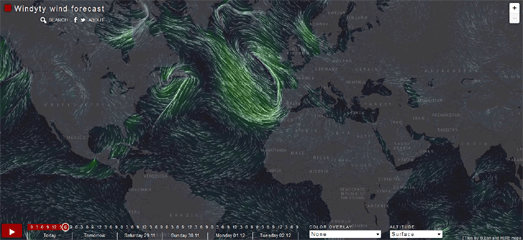Сообщения
Сообщения за ноябрь, 2014
The Maps of the Week
- Получить ссылку
- X
- Электронная почта
- Другие приложения
Improving the Public Tranport Map
- Получить ссылку
- X
- Электронная почта
- Другие приложения
We're Not in Vegas Any More
- Получить ссылку
- X
- Электронная почта
- Другие приложения
Mapping Fraccidents
- Получить ссылку
- X
- Электронная почта
- Другие приложения
Old School Sim City
- Получить ссылку
- X
- Электронная почта
- Другие приложения
The Tapped Submarine Cables Map
- Получить ссылку
- X
- Электронная почта
- Другие приложения
The Animated Wind Forecast Map
- Получить ссылку
- X
- Электронная почта
- Другие приложения
Mapping Your Thanksgiving Dinner
- Получить ссылку
- X
- Электронная почта
- Другие приложения
Where the Rich Live
- Получить ссылку
- X
- Электронная почта
- Другие приложения
Mapping Black Friday Hashtags
- Получить ссылку
- X
- Электронная почта
- Другие приложения
The Race Gap in U.S. Police Departments
- Получить ссылку
- X
- Электронная почта
- Другие приложения
How to Make a Rent Map
- Получить ссылку
- X
- Электронная почта
- Другие приложения
The Solar Eclipse Map
- Получить ссылку
- X
- Электронная почта
- Другие приложения
The Rand McNally Trip Planner
- Получить ссылку
- X
- Электронная почта
- Другие приложения
The Google Maps Virtual Post Office
- Получить ссылку
- X
- Электронная почта
- Другие приложения
Super Mario World
- Получить ссылку
- X
- Электронная почта
- Другие приложения
The Rapid Beating Heart of LA
- Получить ссылку
- X
- Электронная почта
- Другие приложения
Mapping New York Taxi Data
- Получить ссылку
- X
- Электронная почта
- Другие приложения
Wikipedia Heat Maps
- Получить ссылку
- X
- Электронная почта
- Другие приложения
Maps of the Week
- Получить ссылку
- X
- Электронная почта
- Другие приложения
The Bumps of New York City
- Получить ссылку
- X
- Электронная почта
- Другие приложения
United States Arrest Rates
- Получить ссылку
- X
- Электронная почта
- Другие приложения
Crap on a Map
- Получить ссылку
- X
- Электронная почта
- Другие приложения
The Great German Bakers Map
- Получить ссылку
- X
- Электронная почта
- Другие приложения
Squatting in East & West Berlin
- Получить ссылку
- X
- Электронная почта
- Другие приложения
How Walmart Conquered America
- Получить ссылку
- X
- Электронная почта
- Другие приложения
Mapping Support for Obamacare
- Получить ссылку
- X
- Электронная почта
- Другие приложения
The Google Maps Guide to MotoGP
- Получить ссылку
- X
- Электронная почта
- Другие приложения
The Interactive Map Jigsaw
- Получить ссылку
- X
- Электронная почта
- Другие приложения
World Champion Geographer
- Получить ссылку
- X
- Электронная почта
- Другие приложения
Map Lenses
- Получить ссылку
- X
- Электронная почта
- Другие приложения





























